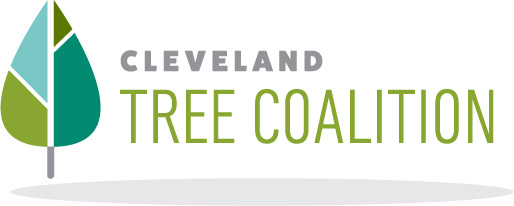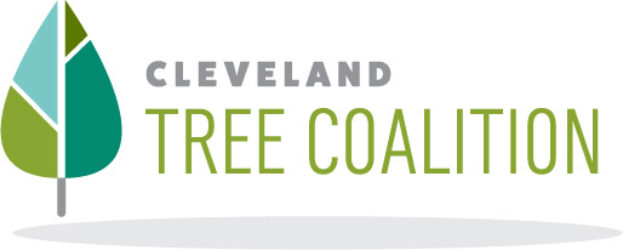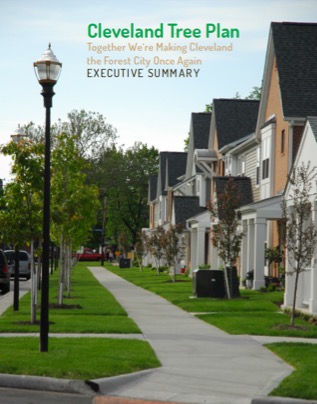

Reforesting the Forest City

The 2024 CTC Grant Program is now accepting applications through Thursday September 5, 2024 at 11:59 p.m. The goal of the CTC Fall 2024 Grant program is to plant trees in the city of Cleveland focusing on neighborhoods with low tree canopy cover. Organizations may apply for up to $75,000 in grant funds. Grant recipients …
The CTC will release a new grant program application on August 5, 2024. Applications are due September 5, 2024 by 11:59 p.m. Through NOPEC’s Energized Community Grant program, the Ohio Department of Natural Resources (ODNR), and a federal earmark from Senator Sherrod Brown, the CTC is offering a round of grant funds. This grant is …
The Cleveland Tree Coalition (CTC) is excited to announce the appointment of Sara Tillie as Director. The Coalition, a partnership of numerous organizations, businesses, and branches of local government, is dedicated to creating a healthy, vibrant, sustainable, and equitable urban forest by collaboratively implementing the Cleveland Tree Plan. In her new role, Sara Tillie will …
Continue reading “New Director of the Cleveland Tree Coalition”
Cleveland was once nicknamed The Forest City, but the city has lost about half its tree canopy since the 1950s. Tree canopy cover is low at 18%, less than one-fifth of what is possible. Each year an estimated 75 acres of tree canopy is lost. At this rate, canopy will drop to 14% by 2040 unless we act now.
Cleveland is in the midst of citywide neighborhood revitalization to improve the quality of life for all citizens, and improving tree canopy is an important element in that transformation. Trees are a critical piece of our community: trees make us healthier and safer, add economic value to our homes and businesses, help us meet environmental challenges, and provide critical wildlife habitat.
The Cleveland Tree Plan is a community-wide collaboration to rebuild the urban forest through partnership.
Download the full findings of the Cleveland Tree Plan using the links below. In addition to the Plan, resources were provided in the form of several appendices that provide expert guidance on tree species selection, planting with a purpose, and more.
![Cleveland Tree Plan: 2020 Tree Canopy Progress Report [PDF]](http://www.clevelandtrees.org/wp-content/uploads/CTP_2020_canopy_progress_report-300x230.jpg) This 2020 Tree Canopy Progress Report is a supplement to the Cleveland Tree Plan that: (1) reviews progress in implementing the 2015 Cleveland Tree Plan; (2) utilizes the 2019 Cuyahoga County Urban Tree Canopy Assessment data to evaluate the current state of Cleveland’s urban forest and highlight changes in tree canopy between 2011 and 2017; (3) updates calculations on the benefits of Cleveland’s urban forest based on the most recent models and research; (4) updates the socio-economic and public health framework for neighborhood canopy action; (5) provides new recommendations to help reverse the canopy loss trend in Cleveland.
This 2020 Tree Canopy Progress Report is a supplement to the Cleveland Tree Plan that: (1) reviews progress in implementing the 2015 Cleveland Tree Plan; (2) utilizes the 2019 Cuyahoga County Urban Tree Canopy Assessment data to evaluate the current state of Cleveland’s urban forest and highlight changes in tree canopy between 2011 and 2017; (3) updates calculations on the benefits of Cleveland’s urban forest based on the most recent models and research; (4) updates the socio-economic and public health framework for neighborhood canopy action; (5) provides new recommendations to help reverse the canopy loss trend in Cleveland.
 The Cleveland Tree Plan analyzes tree canopy data published for Cuyahoga County, Ohio, in 2013. The Plan provides more detailed analysis of tree cover and tree benefits by neighborhood and outlines a roadmap for rebuilding Cleveland’s urban forest through partnership, to help Cleveland reclaim its identity as “The Forest City”.
The Cleveland Tree Plan analyzes tree canopy data published for Cuyahoga County, Ohio, in 2013. The Plan provides more detailed analysis of tree cover and tree benefits by neighborhood and outlines a roadmap for rebuilding Cleveland’s urban forest through partnership, to help Cleveland reclaim its identity as “The Forest City”.
A growing body of research and documentation validates the critical role that a robust urban tree canopy plays in providing an environment that contributes to residents’ health and economic well-being as well as helping to meet the many environmental and ecological challenges that impact their daily lives.
By improving air quality and reducing the heat island effect of paving and buildings, trees have been proven to improve oxygen levels, reduce asthma and other respiratory issues, and reduce violence in neighborhoods as tree canopy increases.
Trees and landscaping around residential and business properties reduce heating and cooling needs, as well as increase business traffic in commercial districts.
Trees slow the flow and quantity of rainwater that enters storm drains and reduce the quantity of pollutants that enter our waterways. Additionally, the ability of trees to absorb carbon dioxide and store carbon helps combat the increasing impacts of a changing climate.
A larger tree canopy increases urban wildlife habitat for song birds, small mammals, and pollinators. A healthy urban forest is a critical component of wildlife, air, water, soil, and other conservation efforts.